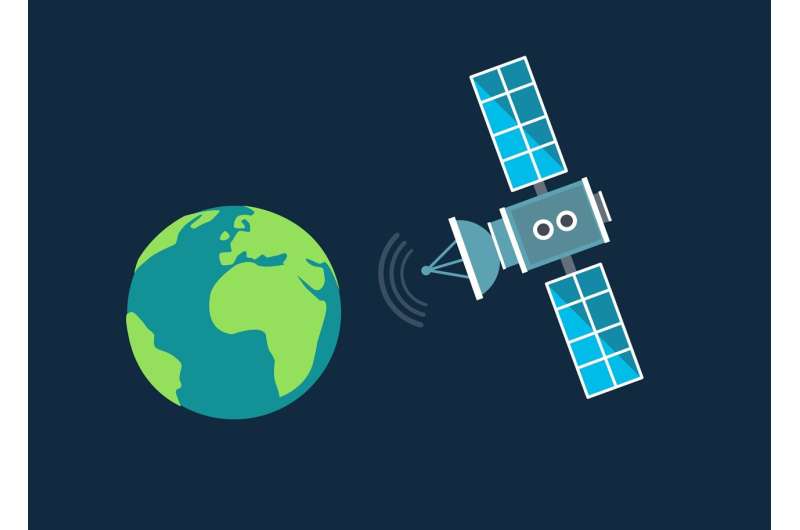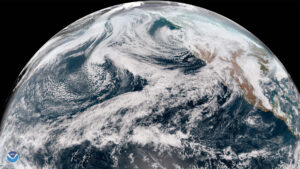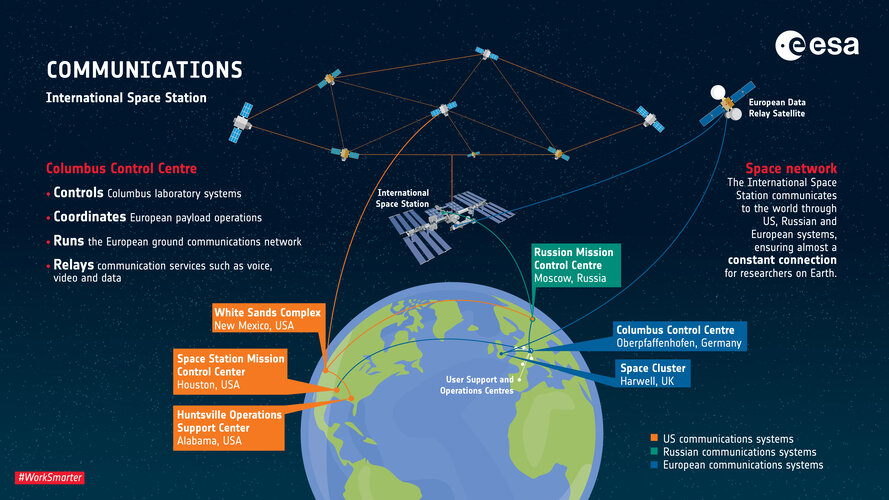Pebbles before mountains
Tuesday, 18 January 2022 06:02 NASA's Mars 2020 mission team has been working methodically and thoroughly, making good progress on understanding the best path forward to remove the uninvited pebbles from Perseverance's bit carousel. Over the previous weekend, and earlier this week, operational sequences were developed and tested to remove these rocky interlopers.
With terrestrial experimentation complete, we have begun
NASA's Mars 2020 mission team has been working methodically and thoroughly, making good progress on understanding the best path forward to remove the uninvited pebbles from Perseverance's bit carousel. Over the previous weekend, and earlier this week, operational sequences were developed and tested to remove these rocky interlopers.
With terrestrial experimentation complete, we have begun Hubble views a tranquil galaxy with an explosive past
Tuesday, 18 January 2022 06:02 The lazily winding spiral arms of the spectacular galaxy NGC 976 fill the frame of this image from the NASA/ESA Hubble Space Telescope. This spiral galaxy lies around 150 million light-years from the Milky Way in the constellation Aries. Despite its tranquil appearance, NGC 976 has played host to one of the most violent astronomical phenomena known - a supernova explosion.
These cataclysmi
The lazily winding spiral arms of the spectacular galaxy NGC 976 fill the frame of this image from the NASA/ESA Hubble Space Telescope. This spiral galaxy lies around 150 million light-years from the Milky Way in the constellation Aries. Despite its tranquil appearance, NGC 976 has played host to one of the most violent astronomical phenomena known - a supernova explosion.
These cataclysmi Airbus teams with Japan telcos to study connectivity services from high-altitude platforms
Tuesday, 18 January 2022 04:54 Airbus, Nippon Telegraph and Telephone Corporation (NTT), NTT DOCOMO, and SKY Perfect JSAT have jointly begun studying the feasibility of collaborating on future high-altitude platform stations (HAPS)-based connectivity services as part of a future space-based wireless connectivity ecosystem.
Launched with a memorandum of understanding (MOU), the study aims to identify the early deployment
Airbus, Nippon Telegraph and Telephone Corporation (NTT), NTT DOCOMO, and SKY Perfect JSAT have jointly begun studying the feasibility of collaborating on future high-altitude platform stations (HAPS)-based connectivity services as part of a future space-based wireless connectivity ecosystem.
Launched with a memorandum of understanding (MOU), the study aims to identify the early deployment HGC offers ultra-low latency Eyeball-as-a-Service across Asia
Tuesday, 18 January 2022 04:54 HGC Global Communications Limited (HGC), a fully-fledged ICT service provider and network operator with extensive global coverage, and Kacific Broadband Satellites Group (Kacific), a next-generation broadband satellite operator that provides affordable, high-speed broadband access to Asia Pacific, have collaborated to boost critical connectivity across emerging markets in the Philippines, provid
HGC Global Communications Limited (HGC), a fully-fledged ICT service provider and network operator with extensive global coverage, and Kacific Broadband Satellites Group (Kacific), a next-generation broadband satellite operator that provides affordable, high-speed broadband access to Asia Pacific, have collaborated to boost critical connectivity across emerging markets in the Philippines, provid Newly discovered carbon may yield clues to ancient Mars
Tuesday, 18 January 2022 04:54 NASA's Curiosity rover landed on Mars on Aug. 6, 2012, and since then has roamed Gale Crater taking samples and sending the results back home for researchers to interpret. Analysis of carbon isotopes in sediment samples taken from half a dozen exposed locations, including an exposed cliff, leave researchers with three plausible explanations for the carbon's origin - cosmic dust, ultraviolet degr
NASA's Curiosity rover landed on Mars on Aug. 6, 2012, and since then has roamed Gale Crater taking samples and sending the results back home for researchers to interpret. Analysis of carbon isotopes in sediment samples taken from half a dozen exposed locations, including an exposed cliff, leave researchers with three plausible explanations for the carbon's origin - cosmic dust, ultraviolet degr Curiosity measures intriguing carbon signature on Mars
Tuesday, 18 January 2022 04:54 After analyzing powdered rock samples collected from the surface of Mars by NASA's Curiosity rover, scientists have announced that several of the samples are rich in a type of carbon that on Earth is associated with biological processes.
While the finding is intriguing, it doesn't necessarily point to ancient life on Mars, as scientists have not yet found conclusive supporting evidence of
After analyzing powdered rock samples collected from the surface of Mars by NASA's Curiosity rover, scientists have announced that several of the samples are rich in a type of carbon that on Earth is associated with biological processes.
While the finding is intriguing, it doesn't necessarily point to ancient life on Mars, as scientists have not yet found conclusive supporting evidence of New research may help scientists unravel the physics of the solar wind
Tuesday, 18 January 2022 04:54 A new study led by University of Minnesota Twin Cities researchers, using data from NASA's Parker Solar Probe, provides insight into what generates and accelerates the solar wind, a stream of charged particles released from the sun's corona. Understanding how the solar wind works can help scientists predict "space weather," or the response to solar activity-such as solar flares-that can impact b
A new study led by University of Minnesota Twin Cities researchers, using data from NASA's Parker Solar Probe, provides insight into what generates and accelerates the solar wind, a stream of charged particles released from the sun's corona. Understanding how the solar wind works can help scientists predict "space weather," or the response to solar activity-such as solar flares-that can impact b Chinese scientists build 'Artificial Moon' to conduct experiments in low gravity
Tuesday, 18 January 2022 04:54 According to the South China Morning Post, the facility located in Jiangsu Province, will play an important part in the exploration of the Moon as China plans to land its astronauts on Earth's satellite by 2030 and set up a base there.
Chinese scientists have built an artificial moon that will make it possible to conduct experiments in low gravity. According to the researchers, their creat
According to the South China Morning Post, the facility located in Jiangsu Province, will play an important part in the exploration of the Moon as China plans to land its astronauts on Earth's satellite by 2030 and set up a base there.
Chinese scientists have built an artificial moon that will make it possible to conduct experiments in low gravity. According to the researchers, their creat China conducts its first rocket launch of 2022
Tuesday, 18 January 2022 04:54 China launched a Long March 2D carrier rocket on Monday morning, kicking off the country's space program for 2022.
The rocket blasted off at 10:35 am at the Taiyuan Satellite Launch Center in northern China's Shanxi province and soon placed the Shiyan 13 experimental satellite in its preset orbit, China Aerospace Science and Technology Corp said in a statement.
This was China's first
China launched a Long March 2D carrier rocket on Monday morning, kicking off the country's space program for 2022.
The rocket blasted off at 10:35 am at the Taiyuan Satellite Launch Center in northern China's Shanxi province and soon placed the Shiyan 13 experimental satellite in its preset orbit, China Aerospace Science and Technology Corp said in a statement.
This was China's first The International Space Station connected via the SpaceDataHighway
Tuesday, 18 January 2022 04:54 The Airbus' SpaceDataHighway - developed with the support of ESA - provides broadband connectivity services between the International Space Station (ISS) and the Earth. With the Columbus Ka-band (ColKa) terminal now installed and fully tested on-board the ISS, a SpaceDataHighway satellite will start to relay data via a bi-directional link in real time between the ISS Columbus Laboratory and the
The Airbus' SpaceDataHighway - developed with the support of ESA - provides broadband connectivity services between the International Space Station (ISS) and the Earth. With the Columbus Ka-band (ColKa) terminal now installed and fully tested on-board the ISS, a SpaceDataHighway satellite will start to relay data via a bi-directional link in real time between the ISS Columbus Laboratory and the Palomar survey instrument analyzes impact of Starlink satellites
Monday, 17 January 2022 16:57
Since 2019, SpaceX has been launching an increasing number of internet satellites into orbit around Earth. The satellite constellation, called Starlink, now includes nearly 1,800 members orbiting at altitudes of about 550 kilometers. Astronomers have expressed concerns that that these objects, which can appear as streaks in telescope images, could hamper their scientific observations.
To quantify these effects, a team of researchers studied archival images captured by the National Science Foundation (NSF)-funded Zwicky Transient Facility (ZTF), an instrument that operates from Caltech's Palomar Observatory near San Diego. ZTF scans the entire night sky every two days, cataloging cosmic objects that explode, blink, or otherwise change over time. This includes everything from supernovae to near-Earth asteroids. The Zwicky team members say they decided to specifically study the effects of Starlink satellites because they currently represent the largest low-Earth orbit, or LEO, constellation, and they have well-characterized orbits.
The findings, reported in the January 17 issue of The Astrophysical Journal Letters, shows 5,301 satellite streaks appear in archival images taken between November 2019 and September 2021. The streaks are most apparent in so-called twilight observations, those taken at dawn or dusk, which are important for finding near-Earth asteroids that appear close to the sun in the sky.
Space Force signals demand for commercial weather data, but will the industry deliver?
Monday, 17 January 2022 14:16
Military needs for weather data such as cloud coverage and theater weather imagery currently cannot be met by the commercial industry and likely will require significant new investment.
Industry offers cautious optimism about state of space investment
Monday, 17 January 2022 14:02
After a year that saw the rise and potential fall of one tool for space companies to raise money, executives and investors have varying degrees of optimism about the state of the industry heading into 2022.
Space Station communications infographic
Monday, 17 January 2022 13:37 Image:
Space Station communications infographic
Image:
Space Station communications infographic Watch Director General's annual press conference 2022
Monday, 17 January 2022 09:28
Watch live: our start-of-year press conference looking ahead at 2022, with ESA Director General Josef Aschbacher and ESA Directors, from 10:00 CET on 18 January.

